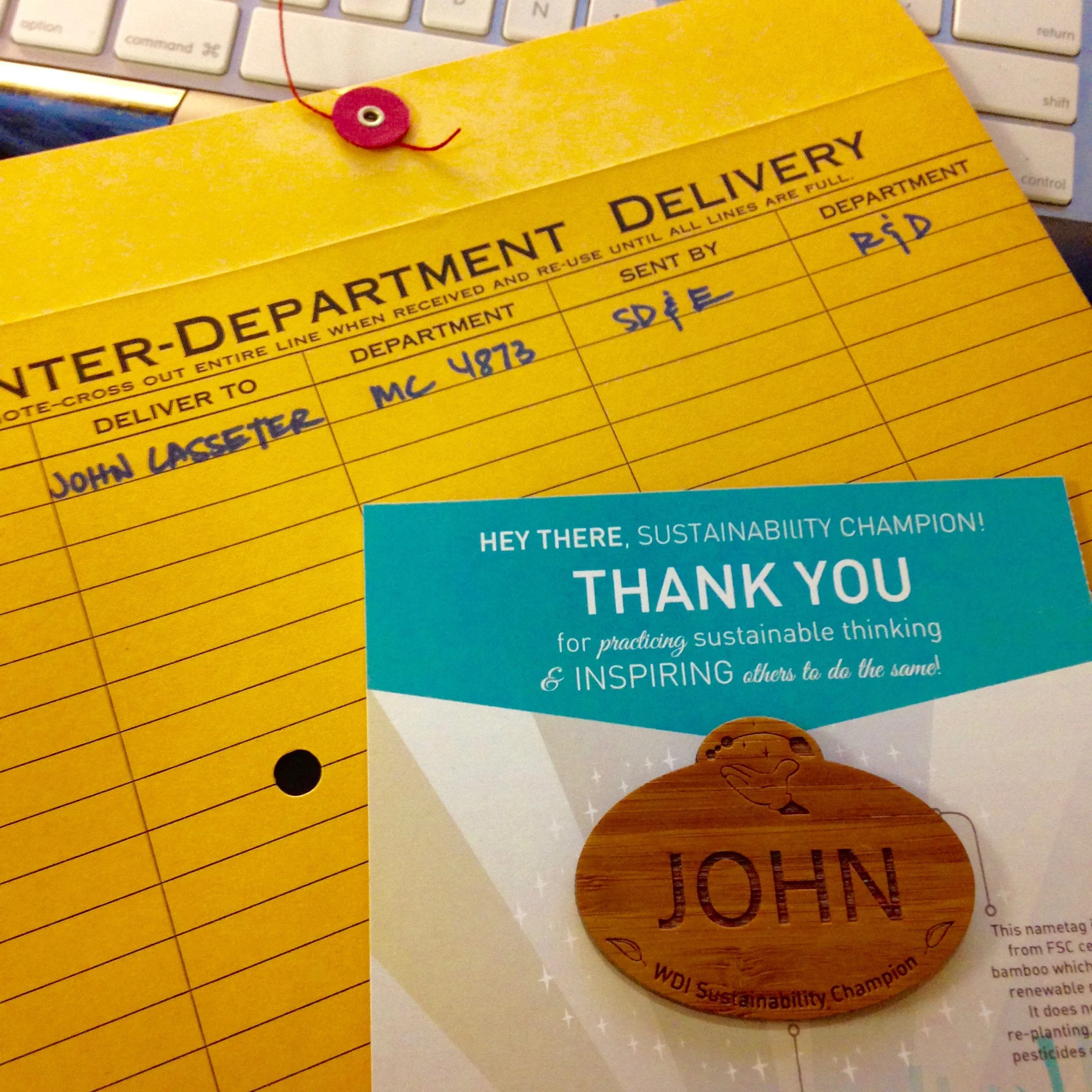Sustainable Design & Engineering
What they do:
At Walt Disney Imagineering (WDI), the Sustainable Design & Engineering (SDE) team is responsible for sustainable design integration and applying sustainability science to ensure ongoing improvement of the environmental impacts of the products they design, build, operate, and sell.
Some Challenges they were facing:
SDE functioned as a startup within Imagineering R&D and had a lack of exposure to other Imagineering groups.
They offered services and resources to other departments (ie. Ride Engineering) that gauged the environmental impact between choices (ie. materials or technologies) but other departments didn't know they existed, thus never used their services.
The influence they had on many projects had positive financial impact, but people did know being sustainable could save money too.
My Role:
As their first Scientific Communications & Branding Strategist, I was tasked to jump start many of their internal campaigns:
help to broaden their visibility within Imagineering
define the group's aesthetic language
lead conceptually driven projects
conceptual design for their showcase event
Project 1: Sustainability Workshops
Sustainability Workshops were conducted to help Project Teams ideate sustainability strategies during their "BlueSky" Design Phase. By conducting "Sustainable Design Thinking" charrettes, participants ideated concepts and messaging that could be implemented throughout the park: park-wide to ride specific. At this time, we were working with Tokyo Disney Sea and the ways in which they could incorporate the Finding Dori story line.
Project 2: Sustainability Champion Name Badge Campaign
I headed the campaign by coming up with the implementation master plan, design of badges, cards, emailers, and all accompanying material. The Name Badges Campaign was two fold.
Acknowledging Great Work | We wanted to reward and acknowledge Imagineers who have made positive sustainable changes and contributions within the WDI community by giving them a personalized Sustainability Name Badge they could show off.
Content Creation | The sustainability stories coming out of the Campaign made for great content on our website "Second Nature" where Project Groups could look up ways in which they could improve or apply sustainability strategies to their work.
Broadening our Exposure | With more Imagineers wearing our badges, the more visibility we had within Imagineering. People started to ask each other "Where did you get that? How can I get one myself?"
Implementation Strategy
To earn one, Imagineers either nominated themselves or their colleagues. There were guidelines though, we wanted stories that were above and beyond company wide initiatives, so recycling didn't count. By allowing them to nominate each other, it allowed for a broad viewership of our group as well as create a tighter sustainability community.
Driving Website Viewership
When the story was extraordinary, they were showcased on the Sustainability Webpage and sent an email card (above) to notify them receiving their badge. When they did receive their badge, it was attached to a card that provided more info about the badge itself, what it meant to be a Sustainability Championship, and to visit our website for their story!
The Sustainability Champion Badges themselves!
The design, material sourcing, and fabrication were done in-house. I designed the badges with Mickey magically floating the "Second Nature" logo. The Badges were laser cut and made from sustainably sourced bamboo ply. A life cycle assessment was made on these badges.
Response
The Badges were a huge success during my time there and following since. The number of Sustainability Champions have exceeded 120 Imagineers across the Glendale and Orlando campuses. This means that Imagineers are pushing forward for innovative ways to lessen environmental impacts.
Project 3: Scientific Infographics
Infographics were a great way to interpret and translate complex scientific systems into understandable concepts. The goal was to make Life Cycle Assessments digestible for designers and engineers who could take the ideas and implement them into their projects. These were also showcased on the website as well as poster format throughout WDI.
Response
These posters have been very well received by Imagineers across Project Teams in both Glendale and Florida, sparking conversation and inspiration.




















